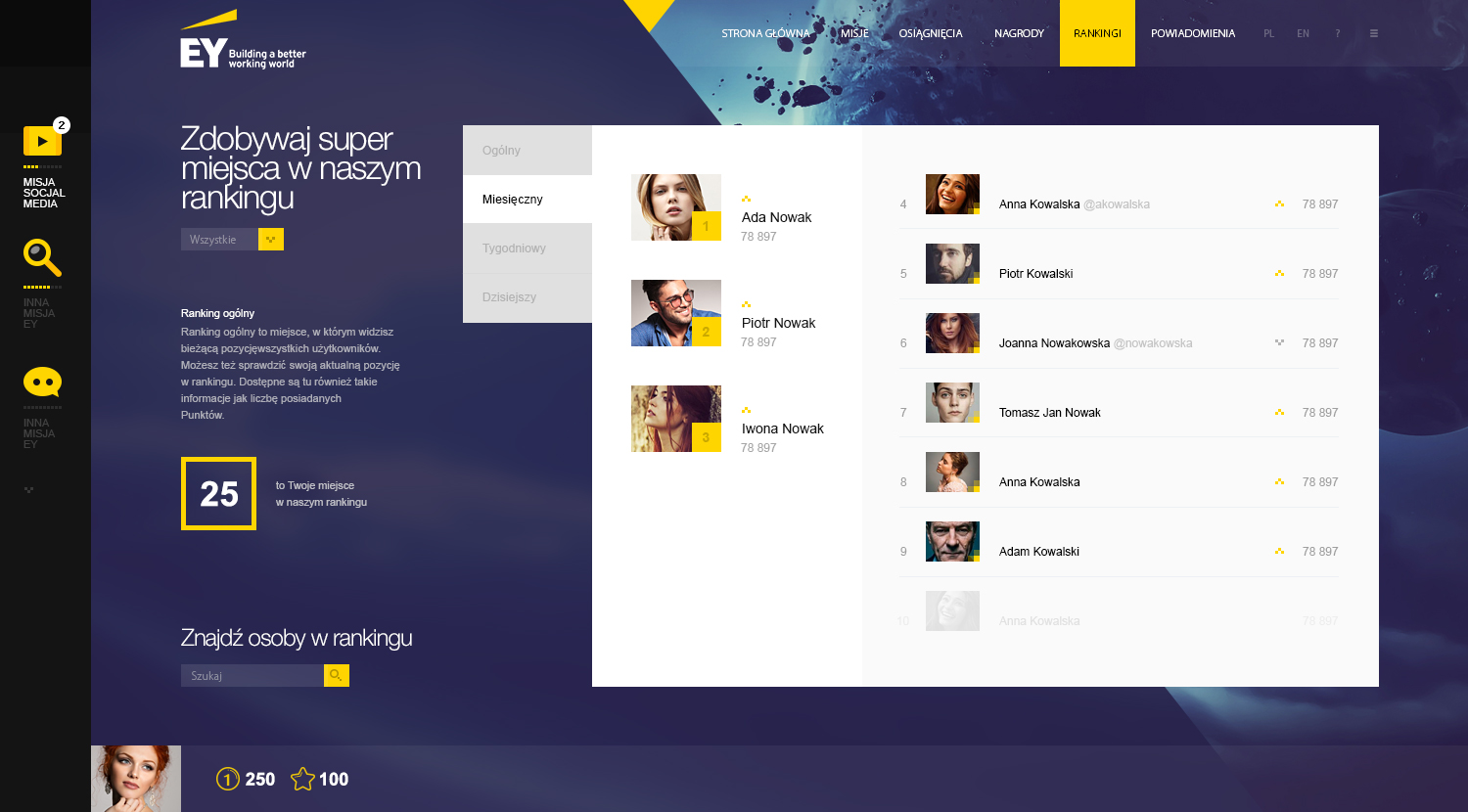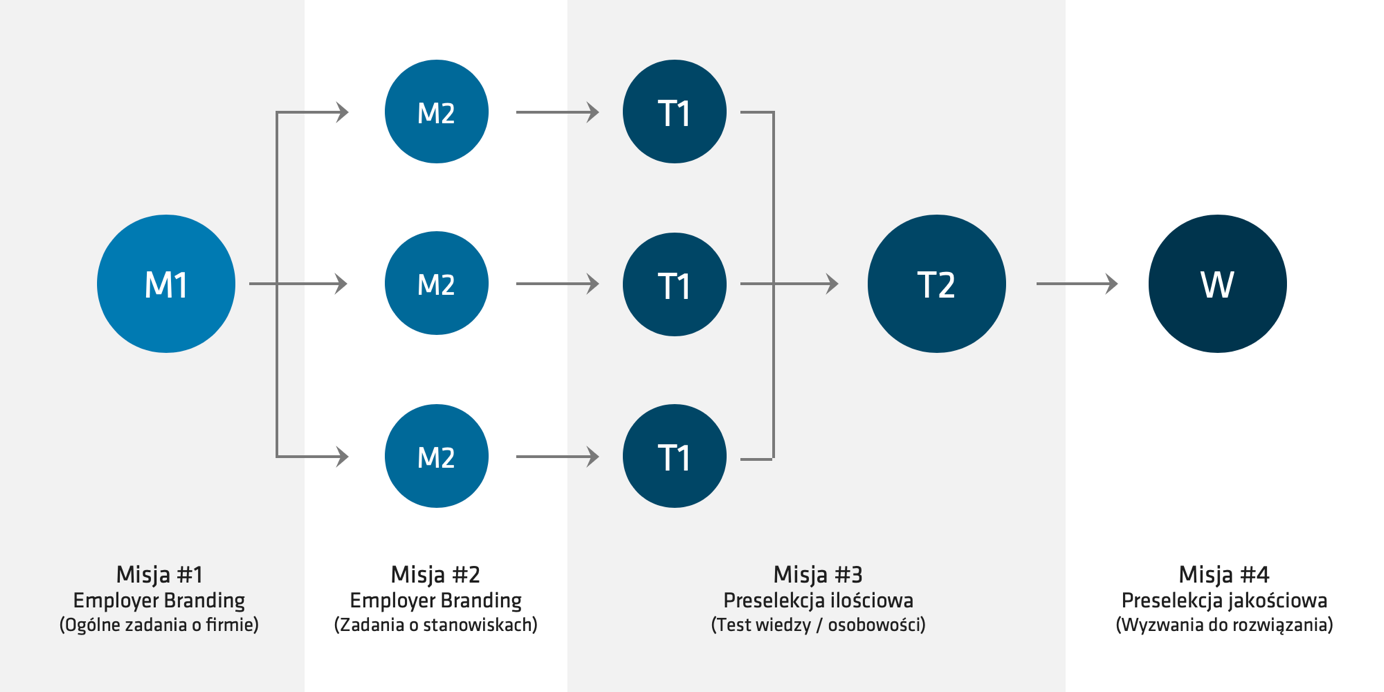One last time about the ‘Candidate Market’.
Let’s begin with some obvious facts. Increased rivalry for the best candidates gets even harsher. In a lot of economic fields, the demand for given set of competences dramatically exceeds the supply. One of the reasons for this is the technological progress which transforms the global marketplace. Among some scarce hard competences, companies name e.g. data processing and analysis, knowledge of methods, models and algorithms that enable agreegating data from different sources. But that’s not all. Challenges occur not only when dealing with very specialistic roles; there are often cases of mass recruitment for Shared Service Centers (language roles), sales departments or those responsible for maintaining continuity of production processes.
70% of medium and large businesses that operate in Poland indicate Employer Branding as the key strategic initiative for 2019
Most of us are well aware of that. What is more – we take actions in order to minimize the impact of “Candidate’s Market” on the continuity of supported businesses. This can be clearly recognized when looking at companies’ activities within the field of Employer Branding. +/- 70% medium and large enterprises operating in Poland indicates Employer Branding as a key strategic initiative for 2019.
How many brand touchpoints must a Candidate experience in order to apply?
One thing is certain – the rivarly between companies is becoming more and more fierce and its focus is now driven from tactical action to a well-thought-of strategy. Nevertheless, one can get a feeling that there’s a lack of innovation in the actions – nowadays a responsive website to build candidates’ engagement or a cleverly-done Employer Branding movie are only common elements to start with, when trying to acquire ‘special talent’ from the market.
More and more brands choose unconventional methods of reaching potential candidates with the use of various tools and media channels. Nobody’s thrilled by TikToku or Snapchat recruitment campaigns which has long become a natural habitat for generation Y or Z. Similar situation can be spotted on the level of use of tools which are a part of a bigger employer brading ecosystem. We use such great goods as VR (i.e. at job fairs in order to build an interesting interaction with the company), chatbots, which relieve us from initial talks with Candidates or gamification which not only enables for building employer image (another strong touchpoint based on above-average user engagement) but can also become a tool for early recruitment stages (preselection). Let’s dig into the topic a little more now.
Out-of-the-box use of gamification in recruitment / employer brand building processes. Meaning…what?
Well-designed gamification can help achieve several goals at once. First of which is good employer branding which means building a relationship with the brand. With the use of gamification, we can gain one very important and often elusive thing – our candidate’s attention. And this does not mean we need a top-notch customer/player journey to introduce our organization and job vacancy waiting to be filled.
EY Polska case study – EY Stars app

EY Polska consulting company has used Gamfi* gamification platform to prepare an campaign aimed at young people (4th and 5th year students) who are only entering the job market.
Under the guise of gamification, the EY Stars app has been developed, where the player could become an astronaut whose main purpose was to solve all kinds of tasks (different level of mechanics and difficulty) while simultaneously learning company’s profile and departments. The player self decided which part of the ship (metaphor of an organization) to explore firts. Thanks to all the various activities, it was not only possible to explain what EY does in an interesting way, but also to get oneself more familiar with given departments and workplaces.
Other use of gamification…
The same tool had been used by the likes of PZU or Procter&Gamble. The largest Polish insurance company has used gamification in a traditional way to enforce employer branding but also to draw the best brand ambassadors from within the community of the app “Attracting the best 3.0”. On the other hand, the latter firm used gamification as a pre-selection recruitment stage for candidates who could qualify to the final, offline stage in Budapest. The virtual P&G challenge has been divided into 2 stages. Employer branding part went first; to explain what IT means at P&G, how is it understood and what does it do in practice. This knowledge enabled candidates for making a decision whether they wanted to take another step – a test to verify their knowledge in the field of new technologies. Therefore, P&G has used gamification to pre-select their candidates.
The Golden Model, which will help you design effective gamification
If you are wondering how to design gamification in order to achieve both above mentioned goals (employer branding & pre-selection) and have it as an integral part of the organization’s ecosystem – you are in good hands. We have prepared a solution model which we find the most efficient (based on previous projects and overall experience). This model enables for 4 consecutive stages:

Before we move on to describing each stage, it will be wise to take some time and think about how our candidate got into the project in the first place. The link to the app can be distributed in several ways, i.e. by:
- including it in the job post and website post,
- sharing it in social media (Facebook, Twitter, Instagram, etc.),
- launching a display, AdWords or other campaign,
- sending mass mailing to candidates’ database (if such exists),
- sharing it during trade shows, job fairs and other relevant events,
- using influencers’ support
Of course, we may only limit ourselves to sending the app link only to certain candidates, e.g. those who anwer the recruitment question.
Let’s move on to stages.
Pssst. I will now use some gamification language.
Stage 1 Mission dedicated to learn the organization
The first stage (apart from user’s onboarding) after entering the app should be the mission dedicated to the organization itself. By a mission, we understand a set of tasks which will introduce the user, in a simple and engaging way, to the most important facts & info about the company. Such mission should contain from a few to more than a dozen tasks which should naturally ‘push’ the user through to the next stage.
Stage 2 Introducing the chosen job title
This next stage is nothing else but a more advanced employer braning, yet this time focused on the given position. When planning the recruitment process one should remember that some candidates often put priority on the job description rather than company’s description.
In this mission it is worth to show the candidate possible projects one can work on, introduce team members or daily-basis tools.
This second stage closes the employer branding part, and her we can either decide to end the journey (leaving candidates with option to send the CV or contact directly) or decide upon a further stage of pre-selection.
Stage 3 Quantitative Pre-selection
Depending on the number of candidates for a given job vacancy, it may be wise to think of pre-selection -which at this stage should be quantitative and become an initial ‘sieve’. Thanks to pre-selection one can easily check candidate’s level of knowledge (just like P&G did for IT) as well as soft skills related to psychics and social influence. Hence we can check whether the candidate is an intro- or extravert, what are his/her strenghts and weaknesses and even how would one behave in a defined situation. Shortly: if one fits the job.
Depending on the set values and features, the platform may solely decide whether to qualify a candidate for an interview or move to a further stage which is qualitative pre-selection.
Stage 4 Qualitative Pre-selection
The last pre-selection stage. Reached only by the best (or at least those, who fulfill the requirements). In this stage we can set various challenges for the candidate, e.g. finding the solution to a problem (a particular business case) or find the error in coding and include a short explanation.
The mechanism of providing the material (text or graphics) can also be used for acquiring knowledge about the candidate – what motivates one’s actions, what are one’s expectations, what are the reasons for changing the job, etc.

Using gamification in recruitment projects will not only enhance employer brand awareness or conduct an efficient pre-selection, but most of all we will build a proper relation within the target group, where your future employees are.
* Gamfi – our sister company, which released a platform as simple as ‘Power Point’, thanks to which you can easily launch any gamification project.
